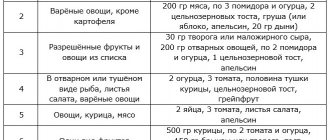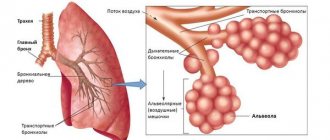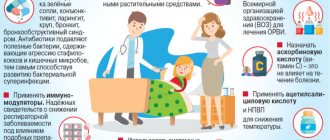Home — For the public
- Map of medical organizations
- Vaccination
- Clinical examination
- Fluorography
- Addresses and opening hours of clinics
- Emergency rooms
- Oncology
- Where to take an HIV test
- Healthy child's office
- Services
- Prevention of CVD
- Disease Prevention
- World Patient Safety Day
- Newspaper "Medical News"
- specialist
- School of Health
— Disease prevention
- HIV infection
- All about vaccination
- All about proper nutrition
- Hepatitis
- Flu
- Dementia
- Schoolchildren's health
- STD
- Tick-borne encephalitis
- Whooping cough
- Measles
- Legionellosis
- Meningococcal infection
- Oncology
- Acute intestinal infection
- Pediculosis
- First aid
- Pneumococcal infection
- Pneumonia
- Prevention of rabies
- Dependency Prevention
- Rotavirus infection
- Diabetes
- Cardiovascular diseases
- Injuries
- Tuberculosis
- Tularemia
- Physical activity
- Obstructive pulmonary disease
- Exotic infections
- Ecology
- Why is swimming in ponds dangerous?
— Influenza — History of influenza epidemics
The first mention of an influenza epidemic in history dates back to 412 BC. Then the famous doctor Hippocrates first described the symptoms of the disease, reminiscent of the same viral infection with which our contemporaries are so familiar: a sharp increase in temperature, pain in the head and muscles, and sore throat. But the main feature of the disease was its strong contagiousness: if symptoms appeared in one person, then a few days later dozens and then hundreds of people around him became ill. Real epidemics began.
“History” included those cases when the disease began to take over countries and continents. Later, in the Middle Ages, the flu was not such a rare guest in people's homes. It was called “Italian fever” because it was believed that the source of the infection was brought from there. Then scientists of that time tried to connect the disease with the influence of celestial bodies. This is how the word “influenza” came from the Italian “influenza” - “influence, influence”.
The cause of the disease and the real damage from it remained unknown for a long time. Information on distribution and human losses can be found dating back to the 19th century.
Influenza pandemic 1889–1890
1889 is the year of construction of the Eiffel Tower and the beginning of the first influenza pandemic, called the “Russian flu”, “Asian flu”. It caused the death of 1 million people worldwide.
The beginning and main losses occurred in the period from October 1889 to December 1890, the “trail” of the pandemic stretched in the form of outbreaks in the spring of 1891, from November 1891 to June 1892, and in the winter of 1893-1894. and in the spring of 1895.
There are hypotheses that the cause of the pandemic was a type A virus with the H2N2 or H3N8 genotype. More recent research indicates that the 1890 flu and the modern coronavirus may share a common ancestor, and that this pandemic is somehow linked to the first entry of beta-coronavirus from cattle into the human population.
The spread of the infection was “helped” by a developed transport network: at that time, a network of railways was built in the largest cities of Europe, and it took only 6 days to cross the Atlantic by ship. The cases were first identified in May 1989 in Central Asia (the city of Bukhara). According to some reports, up to 60% of the population died in that area within a short time.
Further by rail, the flu reached Samarkand, then by October 1989 - to Tomsk. The virus traveled along the Volga trade routes within a month to St. Petersburg, where about 20% of the population fell ill with it, and then headed to Moscow. The virus “met” the New Year of 1890 in Siberia, on Sakhalin.
From St. Petersburg, the flu came to Sweden by water, then Denmark, Norway. In December 1889, the virus visited Germany, where symptoms were initially reported in 600 workers, but within a week about 750 thousand people fell ill.
Then the flu came to France, Italy, Spain, and Scotland. In Madrid alone, 300 people died from the disease every day.
In late 1899, the virus began to spread along the East Coast of North America. The total number of deaths was about 13 thousand people. Then Mexico, India, Indonesia, Singapore, Australia, Japan, New Zealand, China. In the spring of 1890, the flu returned to the point in Central Asia where its journey began.
The lack of information about anti-epidemic measures, the doubts of European scientists about its contagiousness to one degree or another contributed to its spread, and the lack of knowledge about how to treat the disease led to significant casualties. So in the 19th century, hunger (to lower the temperature), whiskey, brandy, quinine, strychnine, and warm salt water were considered remedies for the flu.
The Holy Trinity
The deadly "Spanish flu" frightened doctors. If previously it was believed that a healthy body could cope with the flu on its own, now the question of prevention and the search for cures has become serious. Doctors had doubts about the bacterial nature of the flu. After all, if the disease was caused by the same Pfeiffer bacillus, why was the “Spanish flu” so different from previous influenza epidemics?
The answer to this question was found only in 1931. American Richard Shoup, studying flu in pigs, discovered that the disease was caused not by bacteria, but by a virus! Maybe human flu is also caused by viruses? This hypothesis broke all existing ideas about the causes of influenza, and some scientists took it with hostility. However, research continued, and two years later the virus that causes influenza in humans (Orthomixovirus influenzae) was discovered. In 1933, in London, National Institute for Health Research scientists Wilson Smith, Christopher Andrews and Patrick Laidlaw first isolated a human influenza virus, which was named "influenza A virus". The story of the discovery is quite funny. In 1933, there was an influenza epidemic in England, and scientists took advantage of the situation and set out to find an animal susceptible to human influenza. The experimenters infected all the animals they could get, from snakes to various rodents, and after some time they checked the well-being of their charges.
Time passed, but the animals were not going to get sick. Scientists almost despaired and were ready to conclude that human flu cannot be transmitted to animals, when suddenly they got lucky. Walking around the vivarium again, they noticed that one of the ferrets looked unhealthy. When laboratory worker Wilson Smith picked up the animal, the ferret sneezed. It turned out that the animal was sick, but with what? Imagine the surprise of the scientists when two days later Smith himself fell ill with the flu. This was the first case of experimental influenza infection in history; it was during this study that the causative agent of the disease, the influenza A virus, was isolated.
It would seem that the causative agent of the disease has been found, but in 1940 the scientific world is shocked by another discovery - Thomas Francis isolates another influenza virus, type B virus, and in 1947 Richard Taylor discovers influenza virus type C. Today, much is known about these viruses . Influenza virus type A most often leads to moderate or severe illness, and causes illness not only in humans, but also in some animals: horses, pigs, ferrets, birds. All severe epidemics and pandemics are caused by this virus. Type B virus affects only humans, most often children, does not cause pandemics and usually causes local outbreaks and epidemics, sometimes affecting one or more countries. The influenza C virus has been less studied than others. It only infects humans. Symptoms of the disease are usually very mild or do not appear at all. Influenza type C does not cause epidemics and does not lead to serious consequences.
After it was finally discovered that the causative agents of influenza are viruses, many mysterious facts from the history of the disease became possible to explain, for example, its variability and contagiousness. But the problems haven't decreased. How to find a cure for the flu? After all, a virus, unlike a bacterium, cannot be called a full-fledged organism; it is, as it were, on the border of living and non-living, which means it is impossible to kill it. All the virus has is a chain of nucleic acids with genetic information and a protective shell. Only by infiltrating foreign cells can a virus exist. With the help of special structures on its surface, it attaches to the host cell, and then penetrates inside, where it begins to dictate its rules. The nucleic acids of the virus are integrated into the DNA of a healthy cell, and the affected cell, along with its proteins, begins to synthesize viruses in large quantities. Newly born viruses are released into the wild and look for a new host, and the cell that shelters them is doomed to death.
The influenza virus works on the same principle. Its target is the cells lining the respiratory tract: mouth, nose, trachea. It is there that after infection by airborne droplets or household contact, viruses are introduced and there they intensively multiply. While a person still feels healthy, there is a so-called incubation period. It lasts from 6-12 hours to 2 days. Then the poisonous effect of the viral infection begins. A person becomes suddenly ill. He may have a runny nose and sore throat. By this time, a great many viruses penetrate the blood and spread throughout the body, acting primarily on the nervous system and brain. The patient begins to feel weakness, headaches, and his temperature rises.
The next stage is when viruses take over the entire body, affecting the heart, brain and lungs, etc. All complications of influenza arise due to such a widespread infection, as well as due to the fact that a weakened body begins to attack various pathogenic bacteria. Depending on the patient’s immune status, influenza can last from one to several weeks. During this time, the body's defenses will destroy all viruses and cope with the consequences of the disease. At first, this process is quite slow, and only when the immune system learns to recognize viral particles and begins to create special protection against them, the fight against the virus becomes more effective. This immunity to influenza lasts for many years.
Spanish flu
1918 is the year the First World War ended and the worst influenza pandemic in human history began. The epidemic lasted from 1918 to 1920, and during this time:
- 550 million people (a third of the world's population) were infected with influenza;
- According to various sources, from 50 to 100 million people died (up to 5% of the Earth’s population);
- The mortality rate among those infected reached 20%.
The first pandemic in the 20th century began during the First World War, but very quickly overtook it in the number of victims. The spread of the virus was facilitated by the hardships of that time - poor nutrition, crowding of refugees in military camps, poor sanitary conditions. Under such conditions, the virus mutated into more aggressive forms.
The name “Spanish Flu” was associated with military censorship - the countries participating in the battles tried to hush up rumors about the epidemic, and only Spain, which was neutral at that time, made a public announcement about a new pandemic in May 1918.
What is known about this disease? Already in the spring of 1918, about 40% of the population in Spain itself was infected. Common victims of infectious diseases were children, pregnant women, the elderly and people with chronic diseases. This time, many of the patients were 20-40 years old, and they initially had no health problems.
In severe cases, the “Spanish flu” was described as a disease manifested by hypoxia (oxygen starvation) with cyanosis and pneumonia. As the infection progressed, the cough began to be accompanied by bloody sputum, then intrapulmonary bleeding developed, and the patients died.
Subsequently, a hypothesis arose that this strain of the virus, H1N1, more often led to the death of young people in good health due to its ability to cause an excessive immune response (the so-called cytokine storm). There was a rapid destruction of the lung tissue with filling of the alveoli with inflammatory fluid. Persons with reduced immunity did not react as much to infection and tolerated it more easily.
The place where the virus first appeared is still unknown. There is a hypothesis that China became the first country. Then, within 2 months, the epidemic spread across America, and in the spring of 1918 it came to Europe - Italy, Spain, Switzerland, England and Serbia, Poland, Romania “fell ill.” In the summer, the flu struck residents of Belgium, Denmark, and Holland. During the same wave, the virus spread to South Africa. Then the incidence began to fall. But by the fall of 1918, the flu had again swept the entire planet. So in Japan at the beginning of 1919, there were up to 20 million sick people (a third of the country’s population) and about 250 thousand deaths. In some countries, the infection affected up to 80% of people.
Whole villages of people died. For funerals they used common graves; there was no talk of a decent burial with the use of all accessories.
In Russia, the “Spanish flu” spread during a difficult time - there was a Civil War, which coincided with an epidemic of typhoid and other infectious diseases. There is no reliable information about the number of people who have had the flu. It was not uncommon for patients with H1N1 symptoms to be diagnosed with typhus. So, according to the People's Commissariat of Health of the RSFSR, about 1 million 10 thousand people suffered from the flu in the USSR.
The spread of the virus was facilitated by the development of transport and military operations. So in the first 25 weeks, 25 million people died from the Spanish flu. In some countries, anti-epidemic measures were introduced to limit the epidemic - courts, schools, churches, as well as cinemas and theaters were closed. People were not allowed into shops and were served on the street. Somewhere a military regime was introduced, in the state of Arizona, USA - handshakes were prohibited.
Today: modern vaccines
The production of flu vaccines is generally a constant evolution. The first vaccines were live
.
Weakened viruses were used during production. Used as a nasal spray. Had a lot of side effects. Representative: Ultravac (Russia).
Then they began to use inactivated
vaccines.
The first of them contained, although purified, whole viruses ( whole virion vaccines
).
Their reactogenicity (ability to cause side effects) was very high. Representative: Grippovac (Russia).
Later, they began to produce vaccines with the destroyed virus ( split or split vaccines
).
They have fewer adverse reactions and fairly high immunogenicity. Such vaccines include all virion proteins of the virus (both surface and internal antigens), but due to high purification they do not contain viral lipids and chicken embryo proteins. Representatives: Ultrix (Russia), FLU-M (Russia), Vaxigrip (France), Fluarix (Germany), Fluvaxin (China).
The next class of vaccines is subunit
.
They contain only purified influenza virus surface antigens. Not only the virion and chicken embryo proteins were removed, but also internal antigens. Due to this, a significant reduction in reactogenicity was achieved. To increase the duration and intensity of immunity, manufacturers of subunit vaccines often add an adjuvant to the composition - a substance that enhances the immune response. Representatives: Influvac (Netherlands), Grippol plus (Russia), Sovigripp (Russia).
The last generation includes virosomal
vaccines in which surface antigens are presented in the form of virosomes (pseudoviral structures) that mimic the influenza virus, due to which the vaccine better “educates” the immune system of the person being vaccinated.
Representative: Inflexal V (Switzerland).
In addition to updating the technology for inactivation, assembly, and purification of influenza vaccines, other scientific work is underway to find ways to improve the quality, tolerability and effectiveness of influenza vaccines.
One of the ways to increase efficiency was the WHO recommendation to reorient production from 3-valent to 4-valent ones
vaccines.
Quadrivalent
vaccines contain proteins from four dangerous strains.
Examples: Ultrix Quadri (Russia), Grippol quadrivalent (Russia).
The Russian new generation vaccine “Ultrix Quadri” contains two strains A and B. Among the type A viruses there is H1N1 (similar to the culprit of “Spanish Flu 1918” and “Swine Flu 2009”). It is noteworthy that it was with this drug that Russian President Vladimir Putin, Health Minister Veronika Skvortsova and other members of the Government were vaccinated in 2021.
Asian and Hong Kong flu
The year 1957 remains in the memory of the Russian people as the year of the launch of the first artificial Earth satellite. And at the same time, another epidemic of influenza type A, strain H2N2, was spreading around the world.
The starting point of the new pandemic was April 17, 1957, when it was officially announced in The Times newspaper. Presumably, the Asian flu began its march across the planet a little earlier - in February of the same year, appearing in China or Singapore.
The disease was characterized by a rapid course - only a few days passed from the moment of the first symptoms to death. The cause of death was a complication – pneumonia. There are no exact statistics on people who fell ill and died from the flu. Presumably, the virus has killed between 1 and 4 million people worldwide (WHO experts use an average figure of 2 million).
In 1957, the first vaccine was created.
Ten years later, the strain mutated and returned as the “Hong Kong flu” in 1968-1969. A new pathogen with the H3N2 genotype was formed as a result of a genetic shift. The “material” was human and avian influenza viruses. The epidemic began in Hong Kong and claimed a million lives. The main victims of the virus have been elderly people. Treatment recommendations included gargling with hydrogen peroxide and taking medications containing formaldehyde.
Sources
- Nelson B., Kaminsky D.B. History repeated: Applying lessons from the 1918 flu pandemic: More than a century later, the flu pandemic still offers key lessons on steps to counter COVID-19, but heeding them will require a sharp course correction in the United States. // Cancer Cytopathol - 2021 - Vol129 - N2 - p.97-98; PMID:33528906
- Esparza J. Lessons From History: What Can We Learn From 300 Years of Pandemic Flu That Could Inform the Response to COVID-19? // Am J Public Health - 2021 - Vol110 - N8 - p.1160-1161; PMID:32639922
- Oancea SC., Watson IW. The association between history of screening for cancer and receipt of an annual flu vaccination: Are there reinforcing effects of prevention seeking? // Am J Infect Control - 2021 - Vol47 - N11 - p.1309-1313; PMID:31253553
- Lycett SJ., Duchatel F., Digard P. A brief history of bird flu. // Philos Trans R Soc Lond B Biol Sci - 2021 - Vol374 - N1775 - p.20180257; PMID:31056053
- Flecknoe D., Charles Wakefield B., Simmons A. Plagues & wars: the 'Spanish Flu' pandemic as a lesson from history. // Med Confl Surviv - 2021 - Vol34 - N2 - p.61-68; PMID:29764189
- Dall'Ava JP., Mota A. . // Hist Cienc Saude Manguinhos - 2021 - Vol24 - N2 - p.429-446; PMID:28658425
The mysterious “Russian flu” epidemic
At the end of 1977, another influenza pandemic began. The first information about it came from Soviet doctors, thanks to which the strain was immediately called “red” or “Russian flu” abroad. Epidemiologists noted that most of the sick are young people of military age. The new flu, like the coronavirus, actively affected people in close groups (for example, the barracks of military universities). There is a hypothesis that on the territory of the USSR, officer Alexei Nikitin, who arrived from a business trip to China, became patient zero.
In early 1978, the virus began to spread at the British Air Force base, the Air Force Academy in the United States.
Information about research in the field of military microbiology, vaccine production in the USSR and genetic analysis of the new virus, which showed striking similarities with the isolated strain of the 1950 sample, gave the Russian flu the reputation of a new biological weapon. How can you comment on this? On the one hand, genetic identity with the “old” variant of the virus explained why all the sick people were under 26 years old - older people could have immunity to the pathogen. On the other hand, the virus turned out to be sensitive to temperatures up to 37.5 degrees, which suggested that it was of artificial origin (for example, a vaccine strain).
The disease this time was relatively mild. There are no official statistics to estimate the scale of the pandemic.
The next influenza epidemics occurred in Russia after the collapse of the USSR. They date back to 1995-1996 and subsequent years. There are no official data on morbidity and mortality for each episode separately. There is information that from 1997 to 2001, more than 23 million people suffered from this acute respiratory viral infection.
Why doesn't the vaccine protect 100%?
Previously, we have already examined cases when vaccinated people can also get sick. Once again, we note that any vaccines do not provide a 100% guarantee. In the instructions for the drugs you will see efficiency indicators that are always above 80%, close to 95-99%.
Efficacy is influenced by the initial characteristics of the vaccine and the immune status of the individual. In the case of influenza, we described the additional risks and complexities associated with yearly forecasting and updating of strains.
Scientists have extensive experience in combating this elusive enemy; more than 2,000 serotypes of influenza viruses are known in the world. However, the risk of a completely new mutation always exists, and scientists cannot yet control this. Just like they cannot create a vaccine that would protect against influenza for life and 100%.
Whether you should get vaccinated when you are unsure of the Global Influenza Surveillance System forecasts is up to you. Perhaps the numbers will help you make a difficult choice: in Russia, among those sick with influenza A, 91.8% were unvaccinated, and among those who died, 100%.
Atypical pneumonia
This pandemic is listed along with other influenza episodes, but it was caused by a completely different agent - the beta coronavirus SARS-CoV. Clinical manifestations consisted of the development of acute respiratory syndrome (SARS).
The epidemic “started” in November 2002 in southern China and lasted about 6 months. The distribution, morbidity and mortality statistics are as follows:
- 25 countries covered;
- 774 people died;
- 8096 confirmed infections.
The zero patient of this pandemic remains unknown. According to one hypothesis, it was a Chinese farmer, another - three cooks, one of whom ended up in a hospital in Guangzhou, where he infected 13 employees in a short time. The country's authorities hid information about the spread of the new disease for a long time, without making statements to the press or informing the WHO. The first official report was sent only in February 2003. It contained information about 305 people infected and 5 dead from the virus.
At the end of February 2003, an elderly doctor, Liu Jian Lun, who worked at the hospital where one of the SARS-CoV patients was treated, arrived from Guangzhou to Hong Kong for a wedding celebration and stayed at a hotel. At that time he already had symptoms of the disease. Within 24 hours, he infected 12 hotel guests and soon died in the hospital.
The virus left the country with people living in the hotel and their acquaintances and infected more than 300 people. WHO experts say that about 4,000 cases worldwide can be traced to the source of the infection - a doctor in China.
So within a few days, SARS-CoV became a pandemic.
Who can't?
All influenza vaccines have absolute and temporary contraindications, which are indicated in the instructions for the drugs.
Vaccination is not carried out:
- If you are hypersensitive to chicken protein and have a severe allergic reaction to the vaccine. The key here is heavy.
- For an acute illness, a cold, which occurs with a temperature above 38°C.
- If the doctor has reason that the body’s immune response will not be formed. For example, if the patient is taking a therapy that suppresses the immune response.
- The live vaccine is not used in children under 3 years of age, pregnant women and people with impaired immunity.
Remember: The administered vaccine does not cause illness and does not contribute to a more severe course of influenza and other acute respiratory viral infections.
Why is it especially important to get vaccinated during COVID-19?
If you get a flu shot, you will protect yourself from becoming infected with the dangerous flu viruses that WHO predicts today. The vaccine will not protect you from coronavirus. But those vaccinated against influenza have a better prognosis and a higher chance of coping with complications. More - because the layering of two infections at the same time will be excluded. In addition, both diseases begin with similar symptoms. Having a flu shot will allow your doctor to make a diagnosis faster, ruling out influenza, and prescribe treatment sooner.
Real “viral” diagnostics
Without laboratory tests, doctors cannot distinguish diseases from each other. Both last for several days and rarely cause death or serious illness. Again, it should be noted that in order to make a diagnosis of a viral disease, you need to do the incredible .
- First, it is necessary to look through an electron microscope at the affected areas of all victims during autopsy to find the same sequence of nucleotides in the lesion. The disruption of natural cell morphology caused by sample preparation for transmission electron microscope imaging ensures this. Below are some of the steps (fixation and embedding) that a modified cell culture sample goes through to prepare for imaging:
- Then, when obtaining a viral culture, Koch's four postulates must be observed. These are the most complex manipulations in genetic engineering, costing a lot of money. The same cannot be said about incomprehensible PCR tests, which contain an unknown primer because, for example, the covid virus has not been isolated, but PCR tests are used everywhere. Not only is their effectiveness 5-25%, in addition to this, the PCR test does not establish a connection between the genetic material and what caused the disease .
- Another difficulty and falsity of obtaining a “virus”, which relates to several of Koch’s postulates (let’s look at it in more detail because this is very important) is its isolation from other genetic material . Firstly, when isolating “viruses”, a huge number of chemicals are used, including a huge number of antibiotics, which destroy neighboring cells and change the desired genetic material, then the smears themselves do not, as a rule, undergo purification procedures (for example, Covid PCR tests take them almost on the street), except when work is carried out in laboratories with a biosafety level of level 4.
Therefore, at best, vaccines may only be effective against influenza A and B, which make up about 10% of all circulating viruses, but still not because. The viruses themselves, as we have already figured out, are a component of our immunity. Therefore, based on this, it is a fight against one’s own immunity, including wearing masks, which actively reduce immunity.









